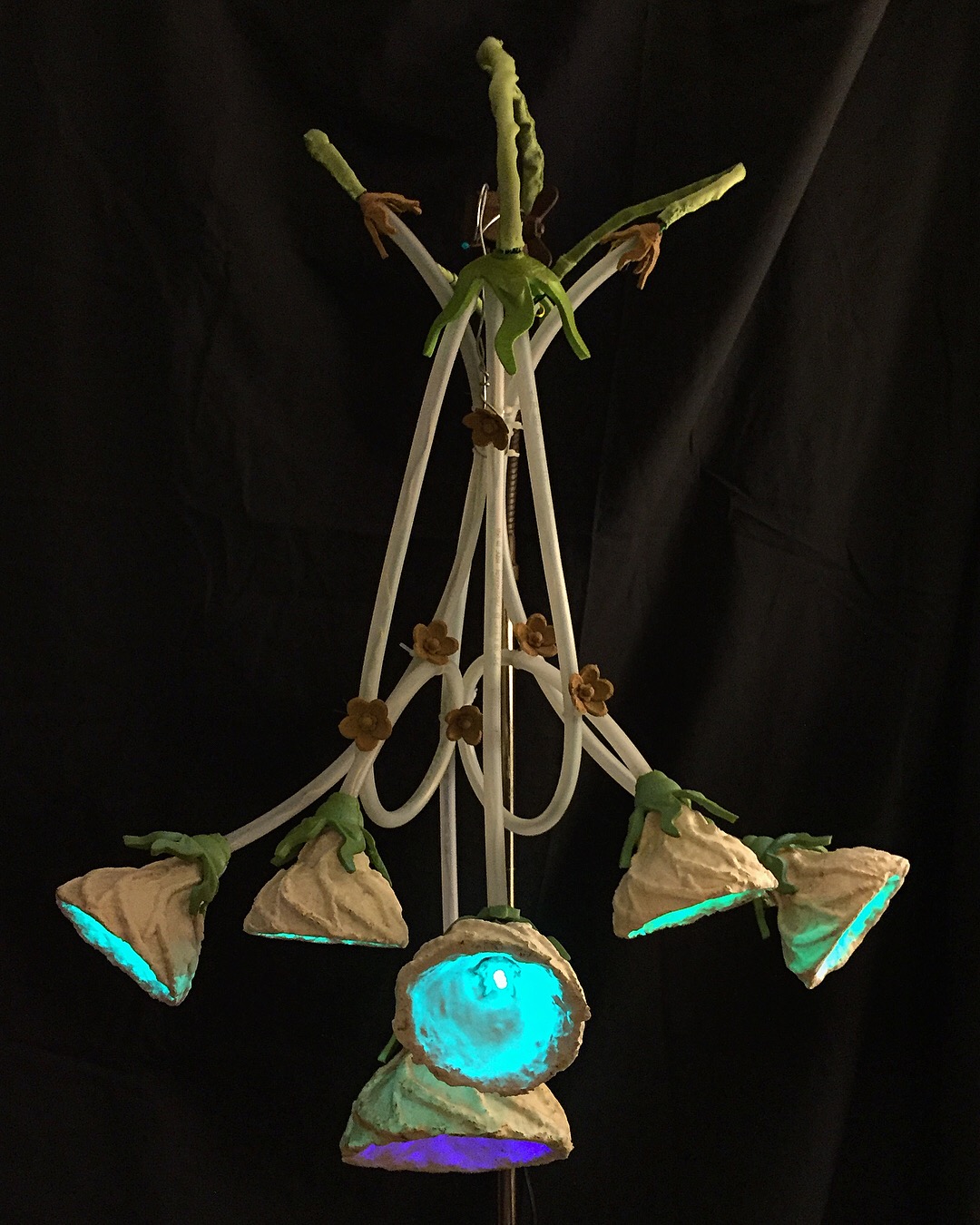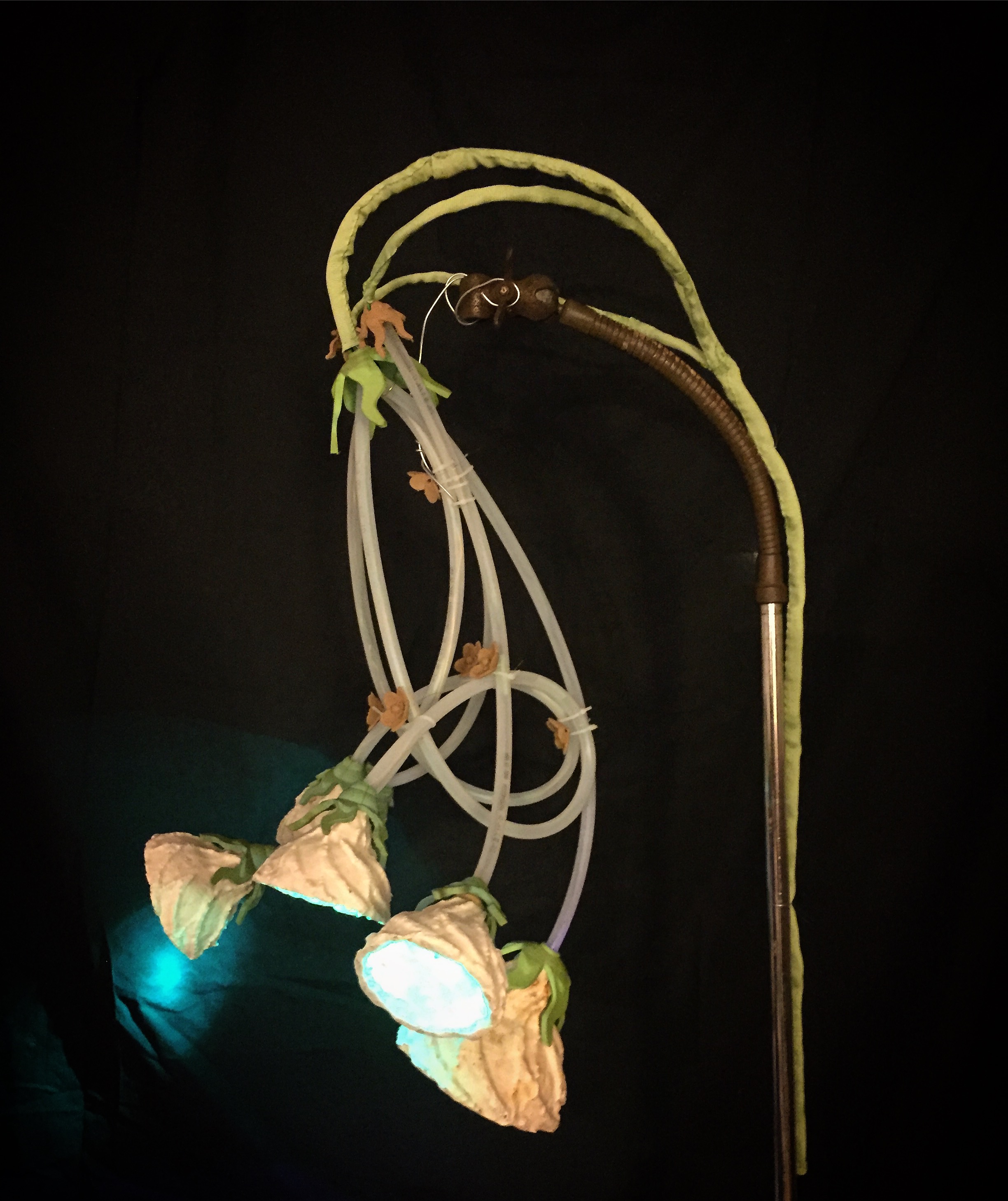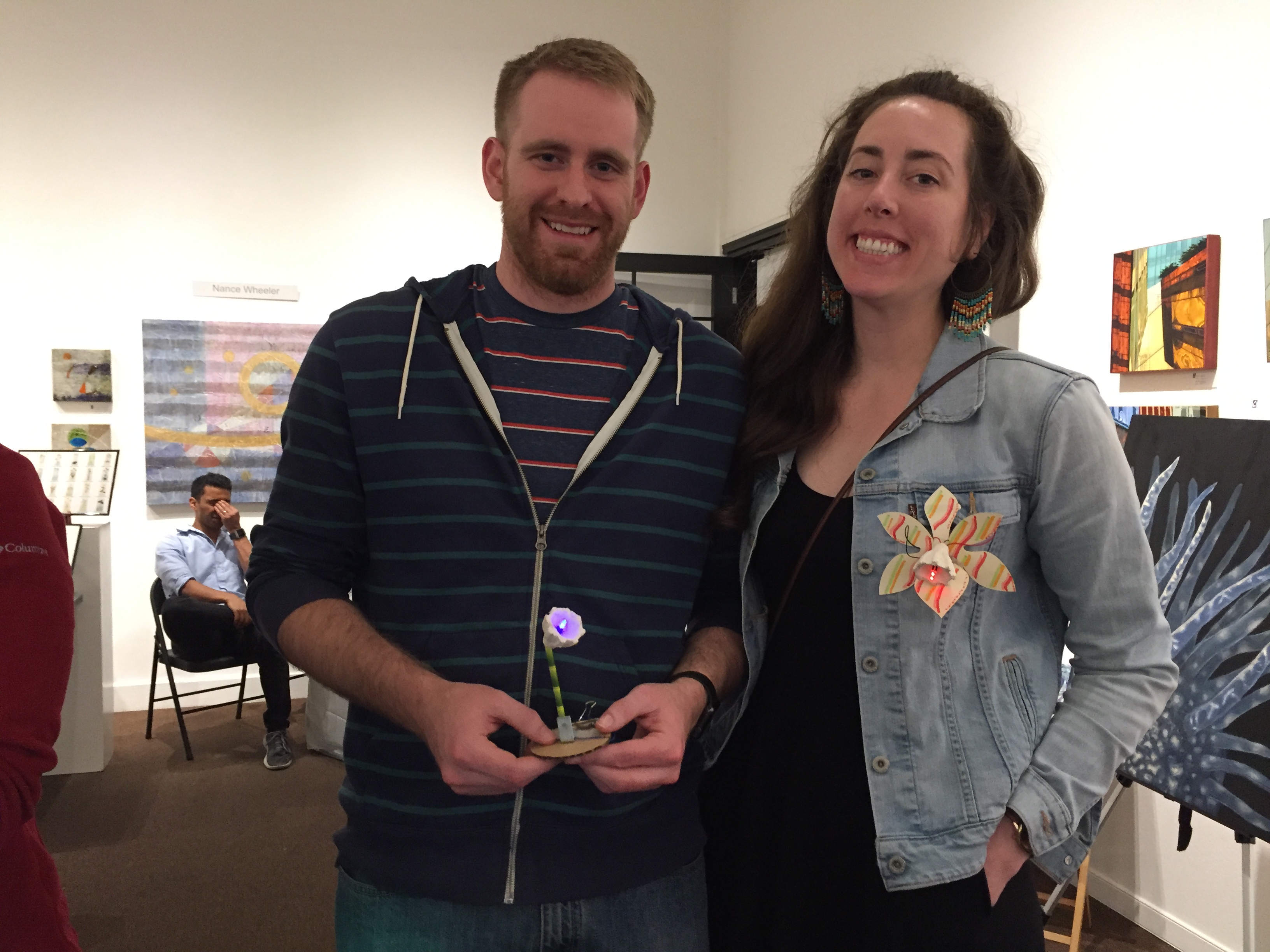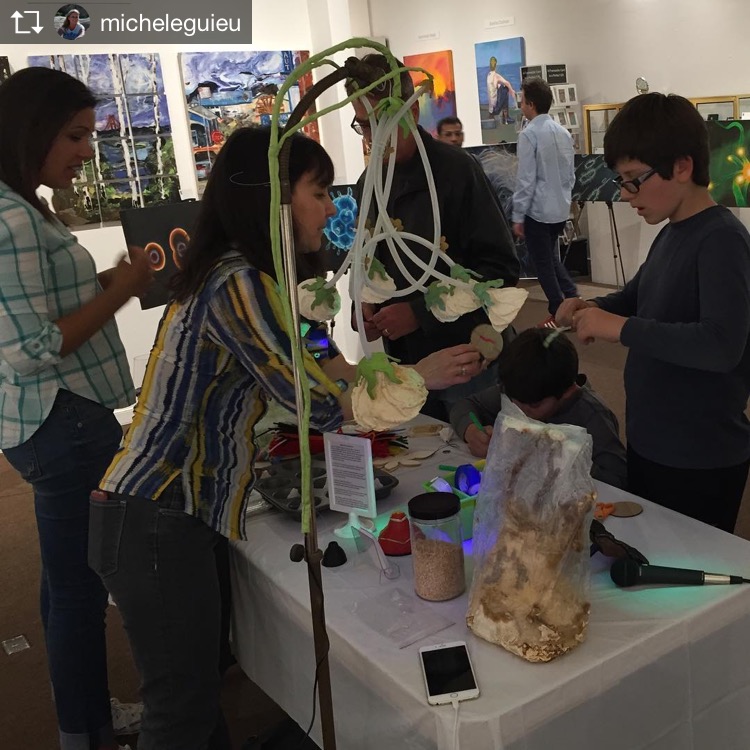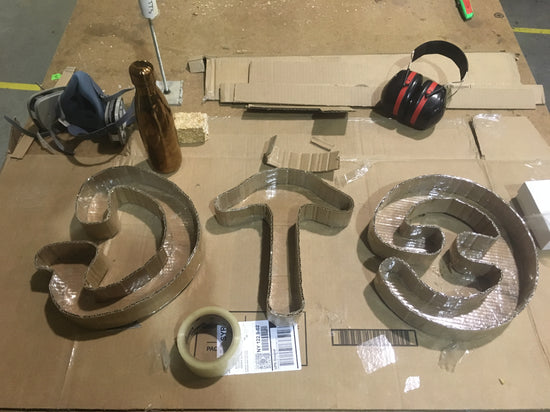Q: What first sparked your interest in the realm of mycology?
A: I was inspired by the Bio Brick mycelium project that I saw at the Tech Museum of Innovation in San Jose in 2016. That was the first time I had heard of fungus as a construction material and I began musing about a community collaborative project that might introduce more of the San Jose public to the materials. This led to the Mycelium Chandelier Grow Project which resulted in a mycelium chandelier for the Tech Museum and in free community mycelium design workshops at the San Jose Museum of Quilts & Textiles.
Q: What exactly are you researching/working on?
A: I am exploring a range of biomaterials for use in blended art and design projects. Some are projects to be conducted with youth and some are projects to be conducted in collaboration with community organizations here in the San Francisco Bay Area. Specifically, I am working with mycelium, silkworms, mealworms, algae, chitin and kombucha. Also, from my garage makerspace, I am also leading a teen girl team in the BioDesign Challenge this year as it has just opened up to high schools.
Q: What is the purpose of your research/work?
A: My goal is to engage a broader cross section of people in playful and creative explorations with biomaterials so that communities and individuals feel a part of conversations centered on sustainability design and the circular economy. Art can be a vehicle for these initial conversations that might initially seem overwhelming. I am exploring low cost biomaterials and methods of designing that are easily replicable and shared via simple lesson plans as resources to educators. I will be sharing these resources here: https://nestmakerspace.weebly.com/ Currently, natural materials and biomaterials explorations are missing from most K-12 makerspaces.
I think exploring mycleuim and other biomaterials can connect people to their local environments and cultures. For example, some of the fungus used for mycleum explorations is the reishi mushroom, a mushroom used in Chinese and Japanese teas, so there is an opportunity to connect biodesign explorations with people's cultural materials and traditional practices.
Q: What do you like most about working with mushrooms/mycelium?
A: The experience of both growing and designing something at the same time is really fascinating. Exploring mycelium as design construction material forces one to operate on a slower timescale and working with mycelium is a beautiful way to see a material slowly evolve. I enjoy watching the mycelium slowly digest the incubated bark and transform a substrate into something new. I never tire of watching the change occur.
For more of Corinne Takara's work, visit http://www.okadadesign.com/



